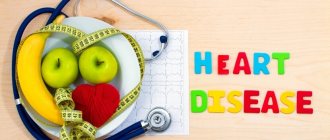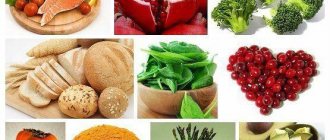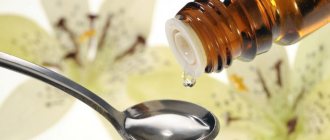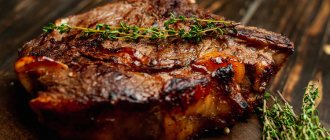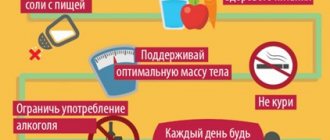September 27, 2016
Arrhythmia is a pathology in which the sequence of heart contractions or heart rate is disrupted. Healthy heart muscle contracts according to a clearly defined rhythm and pattern. The cardiac conduction system is responsible for its formation. It is represented by clusters of nerve fibers and cells located in certain areas of the myocardium and called “bundles and nodes of nervous tissue.” These nerve tissues produce bioelectrical cardiac impulses and are responsible for their conduction. The frequency and rhythm of contractions of the heart muscle depends on the structure of nerve nodes and bundles.
If at least one element malfunctions, arrhythmia develops. The heart rate can be reduced (bradycardia) or, conversely, increased (tachycardia). In a healthy adult, the heart should beat 60-75 times per minute. To avoid heart problems, doctors recommend prevention of arrhythmia , as well as maintaining a healthy lifestyle and timely diagnosis.
General rules
Atrial fibrillation (atrial fibrillation) is a heart rhythm disturbance accompanied by very frequent chaotic excitation and contraction of the atria.
With this form of arrhythmia, the atria contract more often than the ventricles. There are paroxysmal and permanent forms of atrial fibrillation. Among the causes of this disease are:
- mitral stenosis and other heart defects ;
- atherosclerotic cardiosclerosis;
- coronary heart disease;
- thyrotoxicosis;
- sleep apnea ;
- hypertension.
In 60% of patients with a permanent form, hypertension or ischemic heart disease are the main diseases. The course of the disease is aggravated by: drinking alcohol, smoking, nervous and physical stress. Very often, an attack is provoked by drinking large amounts of alcohol, eating a lot of food, strong psycho-emotional and physical stress, and taking diuretics.
Vivid manifestations of atrial fibrillation can be:
- discomfort in the chest;
- dyspnea;
- sweating;
- feeling of fear and lack of air;
- dizziness.
Treatment of atrial fibrillation (rhythm restoration) is carried out with drugs that affect heart rate (beta-blockers, calcium antagonists, antiarrhythmics). All these drugs must be selected by a doctor, and in some cases the selection is carried out in a hospital. In 30-60% of cases, persistent improvement is achieved; sometimes several antiarrhythmic drugs are prescribed simultaneously. Radiofrequency catheter ablation of the focus of pathological excitation is significantly more effective than pharmacological drugs.
Cardiac arrhythmia is dangerous because it is a “source” of thromboembolism and patients have a high risk of developing stroke and systemic embolism (lungs, kidneys). Every sixth stroke occurs in patients with atrial fibrillation. To prevent this complication, indirect anticoagulants are prescribed, which are taken continuously in case of persistent flicker.
Diet for arrhythmia is of particular importance. Nutrition should be based on low-fat foods and plant foods, which are a source of fiber and vitamins. Half of the diet can consist of plant products, 30% are carbohydrates, and 20% are proteins. Food should be steamed, boiled or baked. These methods of cooking retain more nutrients and minimize the fat content in the finished dish.
You should avoid fried, smoked, spicy and salty foods. If any rhythm disturbances occur, you need to reduce your intake of sugar and animal fats. Salt intake should be kept to a minimum. It must be remembered that an attack can be provoked by strong coffee, tea and alcoholic drinks. It is important to eat food in small portions.
Rhythm disturbances are caused by disturbances in electrolyte metabolism. Therefore, patients’ diets must contain foods containing minerals that support the proper functioning of the heart muscle:
- potassium;
- magnesium;
- calcium.
The “sodium-potassium pump” function provides intracellular potassium content, and it is necessary for neuromuscular contractility. It must be said that this function is not possible without magnesium. Potassium deficiency leads to heart rhythm disturbances and deterioration of its contractility. With low potassium levels in the blood, fluid retention occurs, which in turn leads to increased blood pressure.
Sources of potassium are: dried apricots, raisins, nuts (pine, walnuts, almonds, peanuts), jacket potatoes, sunflower seeds, porcini mushrooms, bananas, oatmeal and buckwheat, apples, pears, peaches, watermelon, apricots, melon, prunes, eggplants, cucumbers, citrus fruits, apple juice, black currants, Brussels sprouts and kohlrabi, lentils, beans, peas, carrots, spinach.
Magnesium is necessary for hypertensive patients, when taking diuretics, for the prevention of stroke . Its high content is in pumpkin and sunflower seeds, yeast, buckwheat, wheat bran, cucumbers, peas, beans, sesame seeds, alfalfa shoots, nuts (almonds, pine, peanuts, walnuts), spinach, avocado, dates.
High calcium content is in dairy products, sesame seeds, pumpkin and sunflower seeds, seafood, and nuts. Some vegetables also contain this element: beets, corn, cabbage, artichoke.
Honey can perhaps be called a universal product for the heart, since it is a source of 37 macro- and microelements. Thus , it is the richest natural product in terms of mineral content. It also contains water-soluble vitamins , organic acids, flavonoids , hormones , phytoncides , lipids (palmitic, oleic, stearic fatty acids).
Honey in combination with nuts and dried fruits supports the functioning of the heart muscle
normal weight, blood glucose and cholesterol Excess weight is an additional burden on the cardiovascular system. For obesity , a low-calorie diet is additionally recommended. It is useful to carry out fasting days (apple, cottage cheese, watermelon, kefir and others). A reduction in the frequency of attacks is achieved with a 10% weight loss.
cholesterol levels are high, the diet is adjusted by limiting animal fats, carbohydrates and excluding foods rich in cholesterol. At the same time, emphasis is placed on foods rich in fiber (vegetables, fruits, seaweed, cereals) and polyunsaturated fatty acids (fish, fish oil, vegetable oils). If glucose tolerance is impaired, it is necessary to exclude easily digestible carbohydrates from the diet and limit complex carbohydrates.
If heart failure develops, it is necessary to pay attention to limiting table salt.
In the prevention of attacks of atrial fibrillation, the calm emotional state of the patient is important. To do this, you can engage in auto-training, rest during the day, and normalize night sleep (at least 8 hours). In stressful situations, you can take infusions of valerian, motherwort, hawthorn, and sedative complex preparations based on plant materials. Prevention of attacks involves moderate physical activity: walks in the fresh air, swimming, leisurely walking, morning exercises.
Prevention of arrhythmia: types and causes of occurrence
In medicine, several types of arrhythmia are defined:
- sinus (bradycardia, tachycardia, extrasystole);
- paroxysmal tachycardia;
- ventricular or atrial fibrillation;
- heart block.
To ensure proper prevention of cardiac arrhythmia, it is necessary to exclude factors predisposing to arrhythmia.
Among them:
- violation of acid-base, water-salt metabolism;
- arterial hypertension;
- menopausal symptoms;
- disturbances in the functioning of the endocrine system (especially diseases of the adrenal glands and thyroid gland);
- physical or nervous stress;
- the effect of certain toxic substances or medications;
- ischemia;
- traumatic brain injuries;
- neoplasms in the brain;
- heart defects;
- alcohol abuse, smoking;
- frequent stressful situations;
- inflammatory processes in the heart muscle (myocarditis);
- reduction of sugar in the bloodstream;
- atherosclerosis.
Authorized Products
Diet for cardiac arrhythmia includes:
- Vegetables that occupy the main place in the diet. You need to eat 350-400 g of vegetables per day. Use different vegetable salads as a side dish for meat and fish. Prepare a stewed vegetable stew, including cabbage, beets, zucchini, pumpkin, and eggplant. Among vegetables, all types of cabbage are useful as a low-calorie potassium-containing product. Limit your potato intake, especially when it comes to weight loss. All red-purple vegetables contain polyphenols that stimulate HDL production. Eggplants, beets, and red cabbage are good for high cholesterol .
- Beans and soy products can replace meat due to their high protein content. If they are well tolerated, you should include them in your diet more often.
- Healthy fruits: pomegranate, viburnum, dogwood, blueberries, bananas, raspberries, strawberries, blackberries, chokeberries, lingonberries, cherries, currants, apples, apricots, red grapes, cranberries, since many of them help reduce cholesterol levels in the blood and improve rheological blood properties (thin the blood). Fruits and berries can be used during snacks and preferably raw. If we talk about the content of pectins (they remove cholesterol from the body), then the largest amount is in apples, viburnum, citrus fruits, cranberries, dried dogwood berries, and grapes.
- Fish and seafood dishes should prevail in the diet over meat dishes. Give preference to low-fat fish and occasionally allow yourself fatty fish. The benefits of seaweed are great, which can be added in dried form to all dishes.
- Dietary lean meat and poultry - you can eat them once a week, cook them boiled or baked. If you want baked meat or poultry, you should first boil them and then bake them. This technique reduces the cholesterol and fat content in the product.
- First courses cooked in water. Prefer vegetable soups to cereal soups due to their low calorie content.
- Various cereals in the form of porridges and casseroles. Considering their composition, it is better to prefer buckwheat and oatmeal. If you need to lose weight, reduce the quantity and frequency of porridge consumption.
- Black or bran bread, rich in magnesium and fiber. For dessert, choose savory cookies or savory grain breads.
- Unrefined vegetable oils should make up the majority of the fat. Use oils in their natural form, and alternating them will diversify your diet. Olive oil is rich in oleic fatty acid (MUFA representative). Corn, sunflower and cottonseed oil are sources of omega-6 , and flaxseed, soybean, rapeseed, sesame, and mustard oils contain omega-3 fatty acids.
- Eating a handful of any nuts or seeds daily will enrich your diet with potassium, magnesium and monounsaturated fats. Be aware that these foods are high in calories, so eat them in moderation. Sunflower and pumpkin seeds, pistachios, almonds, pine nuts also contain phytosterols and phytostanols , which are useful in reducing cholesterol levels.
- Milk, cottage cheese, cheeses, and fermented milk drinks should be chosen with low fat content. Avoid heavy cream and sour cream.
- Weak green tea with lemon, you can add chamomile, oregano, thyme, rosehip infusion, juices, mineral water. With heart failure and the appearance of edema , the amount of fluid you drink is limited.
Table of permitted products
| Proteins, g | Fats, g | Carbohydrates, g | Calories, kcal | |
Vegetables and greens | ||||
| greenery | 2,6 | 0,4 | 5,2 | 36 |
| eggplant | 1,2 | 0,1 | 4,5 | 24 |
| beans | 6,0 | 0,1 | 8,5 | 57 |
| zucchini | 0,6 | 0,3 | 4,6 | 24 |
| cabbage | 1,8 | 0,1 | 4,7 | 27 |
| broccoli | 3,0 | 0,4 | 5,2 | 28 |
| boiled cauliflower | 1,8 | 0,3 | 4,0 | 29 |
| bulb onions | 1,4 | 0,0 | 10,4 | 41 |
| carrot | 1,3 | 0,1 | 6,9 | 32 |
| cucumbers | 0,8 | 0,1 | 2,8 | 15 |
| salad pepper | 1,3 | 0,0 | 5,3 | 27 |
| salad | 1,2 | 0,3 | 1,3 | 12 |
| beet | 1,5 | 0,1 | 8,8 | 40 |
| celery | 0,9 | 0,1 | 2,1 | 12 |
| soybeans | 34,9 | 17,3 | 17,3 | 381 |
| asparagus | 1,9 | 0,1 | 3,1 | 20 |
| tomatoes | 0,6 | 0,2 | 4,2 | 20 |
| Jerusalem artichoke | 2,1 | 0,1 | 12,8 | 61 |
| pumpkin | 1,3 | 0,3 | 7,7 | 28 |
| beans | 7,8 | 0,5 | 21,5 | 123 |
| garlic | 6,5 | 0,5 | 29,9 | 143 |
| lentils | 24,0 | 1,5 | 42,7 | 284 |
Fruits | ||||
| avocado | 2,0 | 20,0 | 7,4 | 208 |
| oranges | 0,9 | 0,2 | 8,1 | 36 |
| pomegranate | 0,9 | 0,0 | 13,9 | 52 |
| grapefruit | 0,7 | 0,2 | 6,5 | 29 |
| pears | 0,4 | 0,3 | 10,9 | 42 |
| kiwi | 1,0 | 0,6 | 10,3 | 48 |
| lemons | 0,9 | 0,1 | 3,0 | 16 |
| mango | 0,5 | 0,3 | 11,5 | 67 |
| tangerines | 0,8 | 0,2 | 7,5 | 33 |
| nectarine | 0,9 | 0,2 | 11,8 | 48 |
| peaches | 0,9 | 0,1 | 11,3 | 46 |
| apples | 0,4 | 0,4 | 9,8 | 47 |
Berries | ||||
| gooseberry | 0,7 | 0,2 | 12,0 | 43 |
| Red currants | 0,6 | 0,2 | 7,7 | 43 |
| black currant | 1,0 | 0,4 | 7,3 | 44 |
Nuts and dried fruits | ||||
| nuts | 15,0 | 40,0 | 20,0 | 500 |
| cashew | 25,7 | 54,1 | 13,2 | 643 |
| sesame | 19,4 | 48,7 | 12,2 | 565 |
| flax seeds | 18,3 | 42,2 | 28,9 | 534 |
| fenugreek seeds | 23,0 | 6,4 | 58,3 | 323 |
| sunflower seeds | 20,7 | 52,9 | 3,4 | 578 |
Cereals and porridges | ||||
| buckwheat (kernel) | 12,6 | 3,3 | 62,1 | 313 |
| oat groats | 12,3 | 6,1 | 59,5 | 342 |
| cereals | 11,9 | 7,2 | 69,3 | 366 |
| millet cereal | 11,5 | 3,3 | 69,3 | 348 |
| barley grits | 10,4 | 1,3 | 66,3 | 324 |
Raw materials and seasonings | ||||
| honey | 0,8 | 0,0 | 81,5 | 329 |
Dairy | ||||
| skim milk | 2,0 | 0,1 | 4,8 | 31 |
| natural yogurt 2% | 4,3 | 2,0 | 6,2 | 60 |
Cheeses and cottage cheese | ||||
| cottage cheese 0.6% (low fat) | 18,0 | 0,6 | 1,8 | 88 |
| curd tofu | 8,1 | 4,2 | 0,6 | 73 |
Meat products | ||||
| beef | 18,9 | 19,4 | 0,0 | 187 |
| rabbit | 21,0 | 8,0 | 0,0 | 156 |
Sausages | ||||
| boiled diet sausage | 12,1 | 13,5 | 0,0 | 170 |
Bird | ||||
| chicken fillet | 23,1 | 1,2 | 0,0 | 110 |
| turkey | 19,2 | 0,7 | 0,0 | 84 |
Fish and seafood | ||||
| fish | 18,5 | 4,9 | 0,0 | 136 |
| squid | 21,2 | 2,8 | 2,0 | 122 |
| mussels | 9,1 | 1,5 | 0,0 | 50 |
| seaweed | 0,8 | 5,1 | 0,0 | 49 |
Oils and fats | ||||
| butter | 0,5 | 82,5 | 0,8 | 748 |
| linseed oil | 0,0 | 99,8 | 0,0 | 898 |
| olive oil | 0,0 | 99,8 | 0,0 | 898 |
| sunflower oil | 0,0 | 99,9 | 0,0 | 899 |
Non-alcoholic drinks | ||||
| mineral water | 0,0 | 0,0 | 0,0 | — |
| green tea | 0,0 | 0,0 | 0,0 | — |
| * data is per 100 g of product | ||||
Menu of recommended food items
A special diet includes heart-healthy foods for arrhythmia and is based on providing important microelements for the nutrition of the heart muscle (K, Ca, Mg).
Magnesium is found in wheat bran, cocoa, nuts, soybeans, unpolished rice, oatmeal, legumes, buckwheat, grain bread, hard cheese, and cucumbers.
There is enough potassium in sprouted grains, baked potatoes, bananas, beans, carrots, pumpkin, avocado, raisins, dried apricots, and prunes.
Calcium is found in milk, cottage cheese, hard cheese, nuts, beets, corn porridge, pumpkin seeds, and seafood.
List of allowed foods and dishes:
- bread made from wholemeal, bran, rye, grain flour. Sticky cookies, unsweetened unsweetened pastries;
- lean meat, poultry (boiled, stewed or baked veal, chicken, turkey, rabbit);
- lean river fish, brown algae, coho salmon and baked mackerel are allowed to a limited extent;
- up to three eggs per week, mostly boiled, in omelettes and casseroles;
- low-fat fermented milk products, fermented milk cheese 5% fat, dietary unsalted rennet cheese, sour cream 10% up to 2 tablespoons;
- oils – preference should be given to vegetable oils, used for cooking, dressing salads (sunflower, olive, flaxseed, corn);
- boiled crumbly cereal porridges, casseroles; pasta only from durum wheat; beans, lentils, boiled peas;
- vegetables in large quantities, prepared in various ways, fresh in salads. Olive oil is used as a dressing. It is recommended to add parsley, dill;
- seasonal fruits and berries (out of season - dried fruits), compotes;
- sauces based on milk, tomatoes, berries;
- Drinks include light herbal tea, chicory with milk, diluted juices (mainly from vegetables), compotes, rose hip decoction.
Approximately 60% of the total diet consists of vegetables and fruits, 25% carbohydrate foods and 15% protein foods.
Fully or partially limited products
- Drinks containing caffeine (coffee, tea, tonics, energy drinks) all increase your heart rate.
- Highly extractive broths, fatty meats, lard, cooking fats, full-fat dairy products, mayonnaise, margarine, offal, sausages, smoked meats, any canned food.
- Fried foods.
- Puff pastry products, cakes, semolina, cream pies, confectionery, jam, ice cream.
- Alcohol, since drinking it provokes attacks of arrhythmia .
Table of prohibited products
| Proteins, g | Fats, g | Carbohydrates, g | Calories, kcal | |
Vegetables and greens | ||||
| radish | 1,2 | 0,1 | 3,4 | 19 |
| white radish | 1,4 | 0,0 | 4,1 | 21 |
| red radish | 1,2 | 0,1 | 3,4 | 20 |
| black radish | 1,9 | 0,2 | 6,7 | 35 |
| spinach | 2,9 | 0,3 | 2,0 | 22 |
| sorrel | 1,5 | 0,3 | 2,9 | 19 |
Berries | ||||
| grape | 0,6 | 0,2 | 16,8 | 65 |
Mushrooms | ||||
| mushrooms | 3,5 | 2,0 | 2,5 | 30 |
Cereals and porridges | ||||
| semolina | 10,3 | 1,0 | 73,3 | 328 |
| rice | 6,7 | 0,7 | 78,9 | 344 |
Flour and pasta | ||||
| pasta | 10,4 | 1,1 | 69,7 | 337 |
Confectionery | ||||
| jam | 0,3 | 0,2 | 63,0 | 263 |
| jam | 0,3 | 0,1 | 56,0 | 238 |
| candies | 4,3 | 19,8 | 67,5 | 453 |
| pastry cream | 0,2 | 26,0 | 16,5 | 300 |
| cookie | 7,5 | 11,8 | 74,9 | 417 |
Ice cream | ||||
| ice cream | 3,7 | 6,9 | 22,1 | 189 |
Cakes | ||||
| cake | 4,4 | 23,4 | 45,2 | 407 |
Chocolate | ||||
| chocolate | 5,4 | 35,3 | 56,5 | 544 |
Raw materials and seasonings | ||||
| mustard | 5,7 | 6,4 | 22,0 | 162 |
| mayonnaise | 2,4 | 67,0 | 3,9 | 627 |
Dairy | ||||
| milk 3.6% | 2,8 | 3,6 | 4,7 | 62 |
| milk 4.5% | 3,1 | 4,5 | 4,7 | 72 |
| cream | 2,8 | 20,0 | 3,7 | 205 |
| sour cream 25% (classic) | 2,6 | 25,0 | 2,5 | 248 |
Cheeses and cottage cheese | ||||
| cheese | 24,1 | 29,5 | 0,3 | 363 |
| cottage cheese 11% | 16,0 | 11,0 | 1,0 | 170 |
| cottage cheese 18% (fat) | 14,0 | 18,0 | 2,8 | 232 |
Meat products | ||||
| pork | 16,0 | 21,6 | 0,0 | 259 |
| pork liver | 18,8 | 3,6 | 0,0 | 108 |
| pork kidneys | 13,0 | 3,1 | 0,0 | 80 |
| pork fat | 1,4 | 92,8 | 0,0 | 841 |
| salo | 2,4 | 89,0 | 0,0 | 797 |
| beef liver | 17,4 | 3,1 | 0,0 | 98 |
| beef kidneys | 12,5 | 1,8 | 0,0 | 66 |
| beef brains | 9,5 | 9,5 | 0,0 | 124 |
Sausages | ||||
| smoked sausage | 16,2 | 44,6 | 0,0 | 466 |
| smoked sausage | 9,9 | 63,2 | 0,3 | 608 |
| sausages | 10,1 | 31,6 | 1,9 | 332 |
| sausages | 12,3 | 25,3 | 0,0 | 277 |
Bird | ||||
| smoked chicken | 27,5 | 8,2 | 0,0 | 184 |
| duck | 16,5 | 61,2 | 0,0 | 346 |
| smoked duck | 19,0 | 28,4 | 0,0 | 337 |
| goose | 16,1 | 33,3 | 0,0 | 364 |
Fish and seafood | ||||
| smoked fish | 26,8 | 9,9 | 0,0 | 196 |
| salted fish | 19,2 | 2,0 | 0,0 | 190 |
| Red caviar | 32,0 | 15,0 | 0,0 | 263 |
| black caviar | 28,0 | 9,7 | 0,0 | 203 |
| canned fish | 17,5 | 2,0 | 0,0 | 88 |
| cod (liver in oil) | 4,2 | 65,7 | 1,2 | 613 |
Oils and fats | ||||
| animal fat | 0,0 | 99,7 | 0,0 | 897 |
| cooking fat | 0,0 | 99,7 | 0,0 | 897 |
Non-alcoholic drinks | ||||
| instant coffee dry | 15,0 | 3,5 | 0,0 | 94 |
| black tea | 20,0 | 5,1 | 6,9 | 152 |
| * data is per 100 g of product | ||||
Menu (Power Mode)
Proper nutrition includes daily consumption of vegetables, fruits, healthy cereals, oils, and fish. The list of products is extensive, which allows you to create a varied and unique menu. The diet must contain properly prepared foods—frying is excluded. Limiting carbohydrates and fats will have a positive effect on weight.
| Breakfast |
|
| Lunch |
|
| Dinner |
|
| Afternoon snack |
|
| Dinner |
|
| For the night |
|
| Breakfast |
|
| Lunch |
|
| Dinner |
|
| Afternoon snack |
|
| Dinner |
|
| For the night |
|
| Breakfast |
|
| Lunch |
|
| Dinner |
|
| Afternoon snack |
|
| Dinner |
|
| For the night |
|
Reviews and results
This therapeutic diet must be adhered to constantly. The diet is well tolerated because the diet is varied. Limiting non-healthy foods can help you lose weight and improve your overall health. However, some patients find it difficult to tolerate a reduction in the amount of salt and sweets and they allow themselves “dietary liberties”.
- “... The first attack of atrial fibrillation was 3 years ago. It was quickly stopped and supportive treatment was prescribed. The doctor warned that if you have atrial fibrillation, you should not be nervous, drink alcohol or overeat. The rhythm dropped after the feast: copious amounts of food and drink. The pills I carry with me didn’t help either. I ended up in the department again. This time it took a long time to restore the rhythm. During the examination, high cholesterol was revealed, and over the course of 3 years I gained a little weight. They advised me to go on a diet and recommended losing weight. This time I took the recommendations more seriously. The transition to a healthy diet was difficult - limiting salt, sweets, favorite smoked foods, fried meat and lard. I only stayed strictly for a month, then expanded my diet a little. Today I eat a lot of vegetables, dried fruits, honey, seeds, bread only with bran, baked fish and chicken. I ate this way for six months. The weight dropped, there were no attacks, since during this time I did not allow myself any alcohol”;
- “... I regularly see a cardiologist about arrhythmia. I try not to freak out, I don’t overeat, I don’t drink alcohol, and I gave up tea. Replaced it with juices, fruit drinks, and herbal decoctions. The doctor said that it was impossible to do without a diet, since with age my blood pressure began to increase and my weight gained. If you lose weight and eat right, you can keep your arrhythmia in check. I switched to boiled or baked meat and chicken, I don’t eat fried food at all, I cook for my family when I go out. I try to eat more vegetables and fruits. In winter, this is more difficult, but I buy frozen vegetable mixtures and simmer them in water with a small amount of vegetable oil. I practically don’t eat bread or pastries—only bread without yeast. As a result, my weight decreased and it became easier to move and breathe. I haven’t had any attacks, but I take pills all the time.”
Proper eating
Before the names of the most heart-healthy foods, the rules of eating should be mentioned. They must be adhered to constantly, as this will help maintain or maintain health at the proper level.
- You need to eat about 3-4 times a day.
- You should sit down to eat only when you have an appetite.
- Eating should take place in a calm state. It is unacceptable to eat when you are in a bad mood or excited.
- Food should be at a comfortable temperature. You cannot eat supercooled or hot food “on the run.”
- While eating, you should not read, watch TV, use gadgets or talk loudly. The best digestibility of food occurs with concentrated consumption against the backdrop of positive thinking.
- Food must be chewed thoroughly.
- Finishing your meal on time means leaving the table a little hungry.
The diet must be built taking into account the ratio of food varieties. The largest share of food comes from plant origin - up to 60%, carbohydrate products are consumed no more than 25%, and protein products - no more than 30%. In addition, it is important not to overdo it with fluid intake, the volume of which should be reduced by half.
